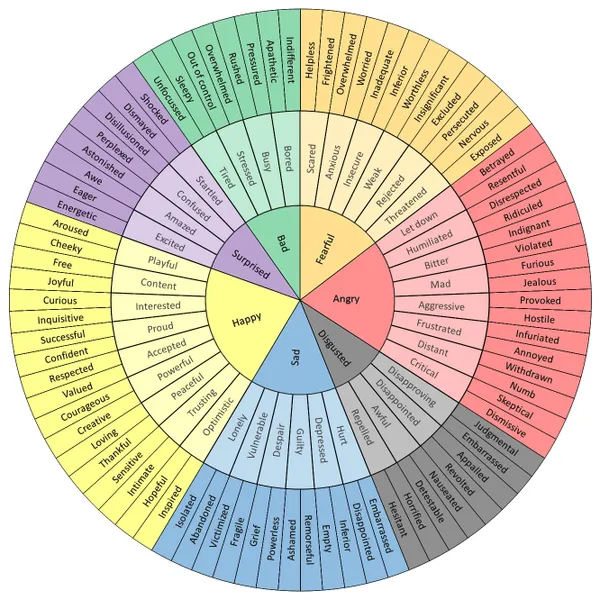Reflections of a Therapist Intern
This blog post is associated with episode 21 of the podcast.
December tends to be a bittersweet month. It’s usually a time of reflection of the past year and to gear up for the year ahead. In this blog, I would like to reflect on my first four months as a psychotherapist intern and share some learning. It’s been a humbling and amazing past few months learning from other therapists and my clients.
To get started, I’d like to go over five common themes I’ve seen from my clients:
I typically start off most of my sessions by asking my clients what the ups and downs are since our last session. Most of the time, they share the downs and report that they didn’t have any ups. While I recognize that my clients are usually coming to therapy because they’re looking for support or feeling low, it doesn’t mean that the only things that they focus on are the downs. I encourage my clients to take a moment to think about what ups are. It doesn’t have to be a HUGE occurrence, it could be anything that made them feel comfortable, excited, or satisfied.

Clients will then share that they had dinner with a family member, that they did well on a test, or caught up with a friend. I want to emphasize that ups and downs are subjective and defined by each person. You can decide how much a situation impacts you and celebrate the small wins in your life. I created a page in my bullet journal to note down all the highlights from the year, including the hikes I went on and some wins or projects I’ve started. Every time I flip through or add to that page, it’s been a pleasant and heartwarming reminder to myself of the things that have gone well or that I consider a win.
It’s easy to remember the bad things that have happened to us because they’re things that aren’t considered “normal” or “expected” but I encourage you to also remember and celebrate the ups. Maybe you went out for a walk this week, finally cleaned up an area of your place, or just had some time to yourself. It could be anything and you get to define what an up is for you.
I see many people, including myself, describing themselves as feeling stressed, overwhelmed, and anxious. It can be helpful to identify what emotion you’re feeling because each mood, emotion, and feeling varies in symptoms and coping mechanisms. Ideally, as therapists, we’d like to equip our clients with skills and strategies so that they can be their own therapists. When clients are able to identify their emotions, they’re building skills in self-regulation and emotional regulation. They’re learning how to take care of themselves and to recognize what they need, what brings them comfort, and how they can move through difficult situations.
I’m going to use anxiety as an example. Anxiety is your body’s natural response to stress and you’re feeling this fear or apprehension about what’s going to come or happen next. Physical symptoms include having an elevated heart rate, sweating or clammy palms, and racing thoughts going at 100km/hr. What other emotions also have these kinds of physical symptoms? When you’re feeling excited, scared, or nervous, you have similar symptoms but they all have different meanings behind them. You could be nervous and excited at the same time, but feeling nervous means being agitated and alarmed, whereas feeling excited can mean being enthusiastic, eager, or having a higher state of energy. Perhaps you’re about to speak in front of a group of people - you’re more likely to be nervous than you are excited and how you cope with each emotion is different, too.
For instance, if you’re nervous about public speaking, it might help to remind yourself of how much you prepared beforehand. On the other hand, if you’re feeling excited because you’re about to watch a movie you’ve been looking forward to, it might not make sense to want to take a few deep breaths to calm down because you’re basking in the excitement.
Learning how to identify what emotion you’re feeling is a powerful tool that develops self-regulation. It can help in so many ways like engaging in healthy coping mechanisms and recognizing what your body and mind need. In turn, this could lead to healthier relationships and improved communication. I ask my clients to write down situations where they feel “anxious” and to identify what kind of emotions they’re feeling through a feelings wheel.

Many of us grew up learning the golden rule of treating others the way you want to be treated. This made a lot of sense to me because if you don’t like to be treated a certain way, why would you do that to someone else? However, I now disagree with this. Instead, I encourage you to consider treating others the way they want to be treated.
A teacher taught her students this concept by asking students if they’ve ever scraped their elbow. All of them raised their hands so she put a bandaid on one student’s elbow. Next, she asked the students if they’ve ever bumped their heads and all of them raised their hands again. She expressed her empathy about hurting their heads and gave another student a bandaid for their elbow. Needless to say, the students were quite confused and it was an important lesson of what “fairness” looks like.

If someone has social anxiety and has difficulty meeting new people whereas you are comfortable around strangers, it might be helpful to be their buddy for the night or to have smaller group settings. I bring up these examples because it’s an indication of how easy it is for us to be subjective and to consider situations with only our perspectives. I’ve noticed a number of individuals becoming angry and upset at others when they haven’t met their expectations and I ask them, “Well, did you tell them that’s what you wanted?” Most of the time, the answer is no, they SHOULD be doing it or they SHOULD know. Instead, I encourage you to consider communicating what you WOULD like in a situation rather than expecting others to read your mind and do things that are normal for you but foreign to them.
I’ve noticed that many people tend to see emotions like anger, frustration, annoyance, and rage as negative and abnormal whereas excitement and happiness are normal. This can impact the way we self-regulate because we end up hiding or running away from those “negative” reactions. I’ve mentioned this in a different episode but I’ll use the same example to really hammer it home. Reactions are normal. If someone cuts you off on a rainy night without their blinkers on, you might feel shocked, upset, annoyed, or furious that they did something so dangerous. However, how you choose to respond can be entirely different and something you have time to consider. Some responses might be getting angry and wanting to speed up and cut them off, honking your horn, swearing loudly in your car, or shrugging it off.
In their book Burnout: The Secret to Solving the Stress Cycle, Dr. Emily Nagoski and Dr. Amelia Nagoski, describe how stress can lead to burnout. Picture this - you’re on a bus ride home and the traffic is worse than usual. It’s rainy and someone’s umbrella is dripping on your bag and you’ve had a long day. When you finally arrive home, you’ve dealt with the stressor by getting out of the traffic and bus, but you’re still in the stress response cycle and your body and mind need to work through the stress itself, not just the stressor. When this happens regularly, when the stress response cycle doesn’t get completed, it becomes chronically activated and it can lead to high blood pressure, poor digestion, and low energy levels. To finish the stress cycle, you could do some type of physical activity like cleaning for a few minutes or doing some jumping jacks.
Maybe it’s opening the window and taking a few deep breaths, hugging someone or something, or making some warm tea to soothe you. Your body just went through a fight or flight mode so it needs time to release and decompress. Of course, it’s a lot easier to say these things and to think about them in hindsight compared to being in the situation. However, when you practice identifying emotions and self-regulation can be more automatic and easier over time because it becomes a habit. Sometimes it’ll still be difficult and we’ll have responses that we’re not proud of it, but how we move through those situations will also change.

Many of us, if not all, have likely experienced moments where we engage in all-or-nothing or black-and-white thinking. In particular, we might notice this when we’re trying to make ourselves feel better. For example, I know I’ve mentioned how helpful it has been to go for a walk and to get some fresh air during some of my episodes and I’m sure many of you have seen self-care strategies that tell you to go walk and call a friend. What people might not recognize is that to go out for a walk, you might need to change clothes or put on a jacket if it’s cold, you need to put on shoes, grab your keys and belongings, and then actually go outside. There are several steps you have to take before going for a walk and that can be exhausting. Maybe you don’t have the capacity to go outside or it’s raining really hard but you need to decompress because you’ve been stuck inside or you just received an email that has upset you. When we think about the stress response cycle, we might be distracting ourselves by closing the email and not looking at it or sitting in our dread. But what’s often missing is the step to feeling better or at ease instead of hiding or running away from our stressors. Going for a walk every time we feel down or annoyed isn’t feasible but it could be standing up to stretch, getting some water to drink, or cracking open our windows for some fresh air. Now you’re boiling down these activities into one or two steps rather than five steps to get yourself outside for 10 minutes.

I encourage you to think about how you might be able to take one or two steps forward to feeling better instead of putting pressure on yourself to have to finish the whole race at once. The little things do add up. Listen to your body and mind and what makes sense for you at each moment.
While those are themes I’ve observed and learned from my clients, I’ve noticed some thoughts that have come up for myself in the last few months, too.
On the outside, I would like to think I’m typically calm, warm, and welcoming. On the inside, there are times where I’m freaking out or panicking. Thoughts like, “What should I say next?” and “Am I even helping this person?” are normal and frequent. I recognize that I put a lot of pressure on myself to help clients create change or to feel supported but I try to remind myself that I’m on a lifelong journey of learning and at most, even if I forget everything, I’m here to hold space for the client and to support them through a challenging moment.
In the last few months, I’ve worked with at least 20 clients and many of them share veryyyyyy heavy stories, experiences, and situations. It can be a lot at times especially if it’s later in the evening or after a long day of work with my day job. I find that it’s been incredibly helpful to reach out to people around me whether it’s to vent, go for a walk, play games, or debrief with another therapist about what my client just shared. I guess with this point, I’m going back full circle with the stress response cycle. The stressor is gone because my session ended, but I still need to complete the cycle. That’s when talking with others or doing activities that are relaxing or fun kick in. One of the things I usually ask my clients is about their support network and who they speak with when they’re having a low moment. I ask you, the listener, the same question - who is in your support network?
